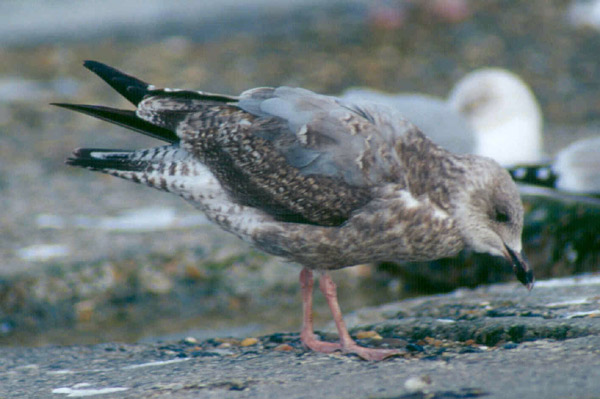 Herring Gull- Zilvermeeuw (argentatus & argenteus)
Herring Gull- Zilvermeeuw (argentatus & argenteus)
(last update:
Herring Gull plumages:
hg 1cy July
hg 1cy August
hg 1cy September
hg 1cy October
hg 1cy November
hg 1cy December
hg 2cy January
hg 2cy February
hg 2cy March
hg 2cy April
hg 2cy May
hg 2cy June
hg 2cy July
hg 2cy August
hg 2cy September
hg 2cy October
hg 2cy November
hg 2cy December
hg 3cy January
hg 3cy February
hg 3cy March
hg 3cy April
hg 3cy May
hg 3cy June
hg 3cy July
hg 3cy August
hg 3cy September
hg 3cy October
hg 3cy November
hg 3cy December
hg sub-ad January
hg sub-ad February
hg sub-ad March
hg sub-ad April
hg sub-ad May
hg sub-ad June
hg sub-ad July
hg sub-ad August
hg sub-ad September
hg sub-ad October
hg sub-ad November
hg sub-ad December
hg ad January
hg ad February
hg ad March
hg ad April
hg ad May
hg ad June
hg ad July
hg ad August
hg ad September
hg ad October
hg ad November
hg ad December
|
(4 images) Herring Gull 2cy (argentatus), November 22 2001, Westkapelle, the Netherlands (51.33N-03.25E). All picture by Pim Wolf.
On the other hand, some features advocate the North European nominate race argentatus (many thanks to Peter Adriaens and Martin Reid):
To compare this individual with other November and December 2cy birds, some links of smithsonianus on the web are worth visiting: Martin
Reid: Steve
Hampton: Osao
Ujihara: Dick
Newell: Frode
Falkenberg: Smithsonianus
Herring Gull has never been recorded in the Netherlands. Rik Winters
added: "Herring Gulls with (almost completely) black tail
are not common, but can be found daily in the Netherlands and
probably originate from northern populations". Thanks to
all who sent information. All comments were much appreciated.
|



